Table of contents
Not having money to invest doesn’t mean you can’t launch a business. With the print-on-demand dropshipping business model, you can open an online store, reach your target audience, and start selling products to customers worldwide – all without paying upfront for inventory.
In this guide, you’ll get valuable insights on how to start dropshipping with no money, from picking a niche to making your first sale.
Key takeaways
-
Start your dropshipping journey with no upfront investment using a free platform like Printful.
-
Proper market research helps you choose a profitable niche and understand your target audience’s needs.
-
Building a store is just the beginning – consistent, smart marketing drives traffic and sales.
-
Paid ads aren’t essential in the beginning – free channels like social media, blogs, and influencer collabs can get you moving.
-
Automation and AI tools help streamline your process and scale efficiently.
-
With the right setup and mindset, turn your store into a successful dropshipping business.
What is dropshipping and how does it work?

The dropshipping business model lets you sell products without buying inventory or dealing with shipping. When a customer places an order on your store, it goes straight to your dropshipping supplier – like Printful and Aliexpress – who produces or prints, packs, and ships the product directly to the customer.
In other words:
-
You never handle the products yourself – Customer orders are sent to the supplier automatically. That said, we strongly encourage sampling everything you plan to sell.
-
No inventory management or storage headaches – You don’t need to stock products.
-
Low upfront costs – You only pay once a sale is made.
Your main job is building your brand, marketing your products, and keeping customer satisfaction high. The supplier handles the logistics, while you focus on growth – connecting with your audience, improving profit margins, and making your store stand out.
So where do the products come from? That’s your supplier's role. For print-on-demand dropshipping, Printful is one of the top-rated, most reliable suppliers, with over a decade of experience, worldwide fulfillment centers, and free tools to help you launch quickly.
Whether you're starting a professional dropshipping store or testing a few product ideas, Printful lets you do it all with zero upfront costs. They supply the products, handle printing and shipping, and let you focus entirely on building your brand.


How to start dropshipping for free
Starting a dropshipping business with no money is entirely possible – it just means investing time instead of cash. You’ll use a mix of free tools and optional paid tools, find trusted dropshipping suppliers, and build a lean, profitable business model from the ground up.
The basics still apply:
-
Know your audience
-
Sell high-quality products
-
Promote smartly


Let’s start with the audience and your niche.
1. Pick a profitable niche for free
Before designing anything or opening a store, figure out who you’re selling to and what you’re selling.
Define your ideal customer – consider age, income, job, shopping habits, and which social media platforms they use. Tools like Google Trends and competitor analysis can help you map their interests.
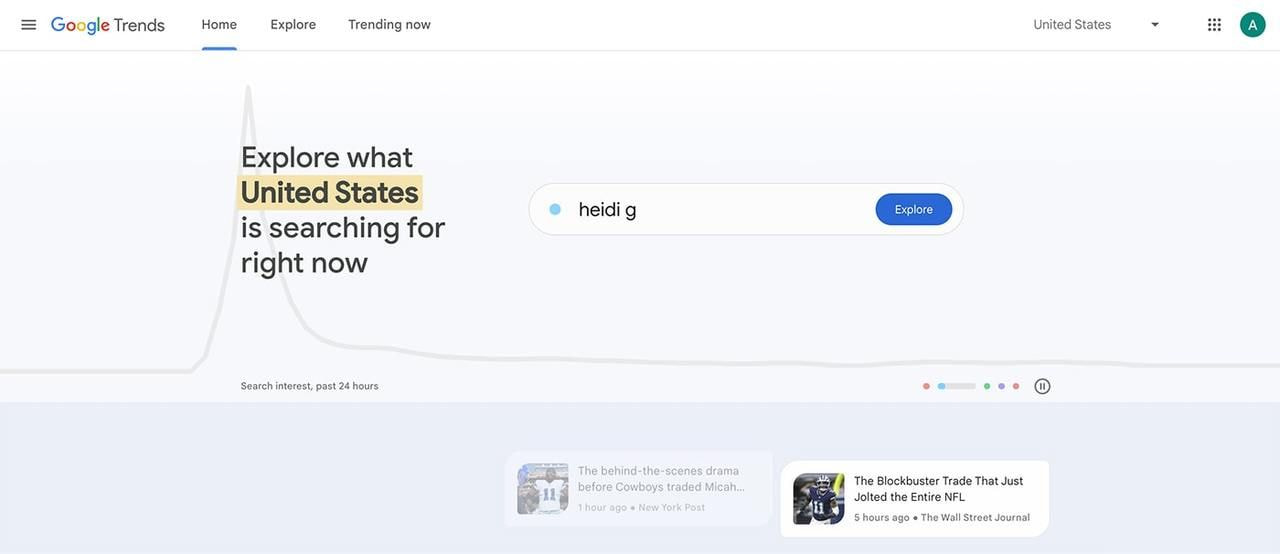
Source: Google Trends
Identify market demand – Look for a profitable niche with consistent or rising search interest. Free tools like Google Trends let you check if there’s actual market demand behind your idea.
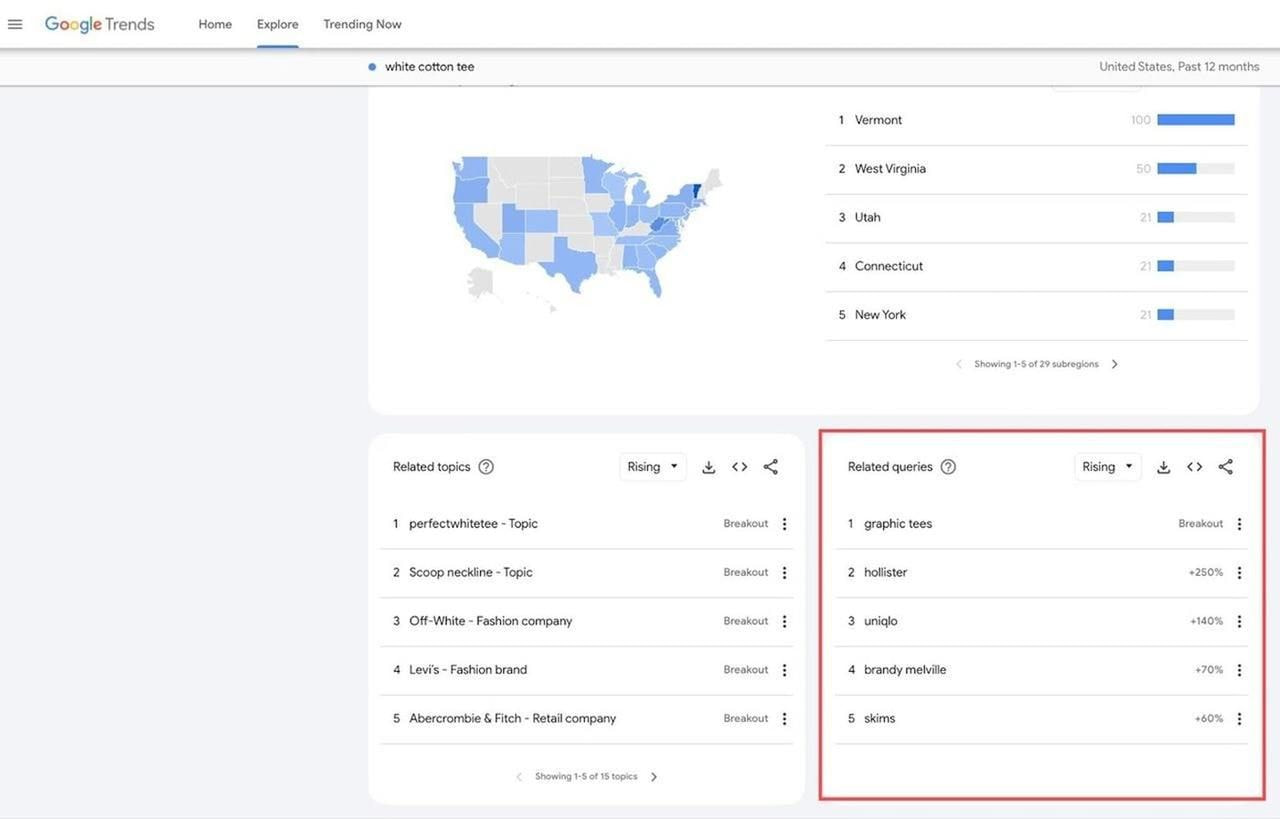
Source: Google Trends
Free research tools to validate your niche:
-
Google Trends – Compare search terms, spot rising queries, and check regional demand.
-
Pinterest – Explore trending designs, visual styles, and what gets saved/shared.
-
Etsy – Browse the best-selling print-on-demand products across categories.
-
Instagram – Follow niche hashtags (e.g., #customtshirts, #walldecor) to monitor design trends.
Choose something you're passionate about. If you love the niche, it’ll show in your branding and help you connect with potential customers.
For example, if you like animals, explore the pet supplies niche. In 2025, the pet supplies market is estimated at $248.71 billion, proving people love to splurge on their furry or scaly friends.
Valuable read: 15 Profitable Dropshipping Business Ideas to Try in 2025.
Once your niche is solid, it's time to pick products that fit:
-
Design trending print-on-demand products – What are people already searching for?
-
Customize best-selling products – Add your own flavor to what already works.
-
Spot the gaps – Offer what competitors don’t.
Use Printful’s Bestseller section in the Product Catalog to explore high-demand items and see what sells.
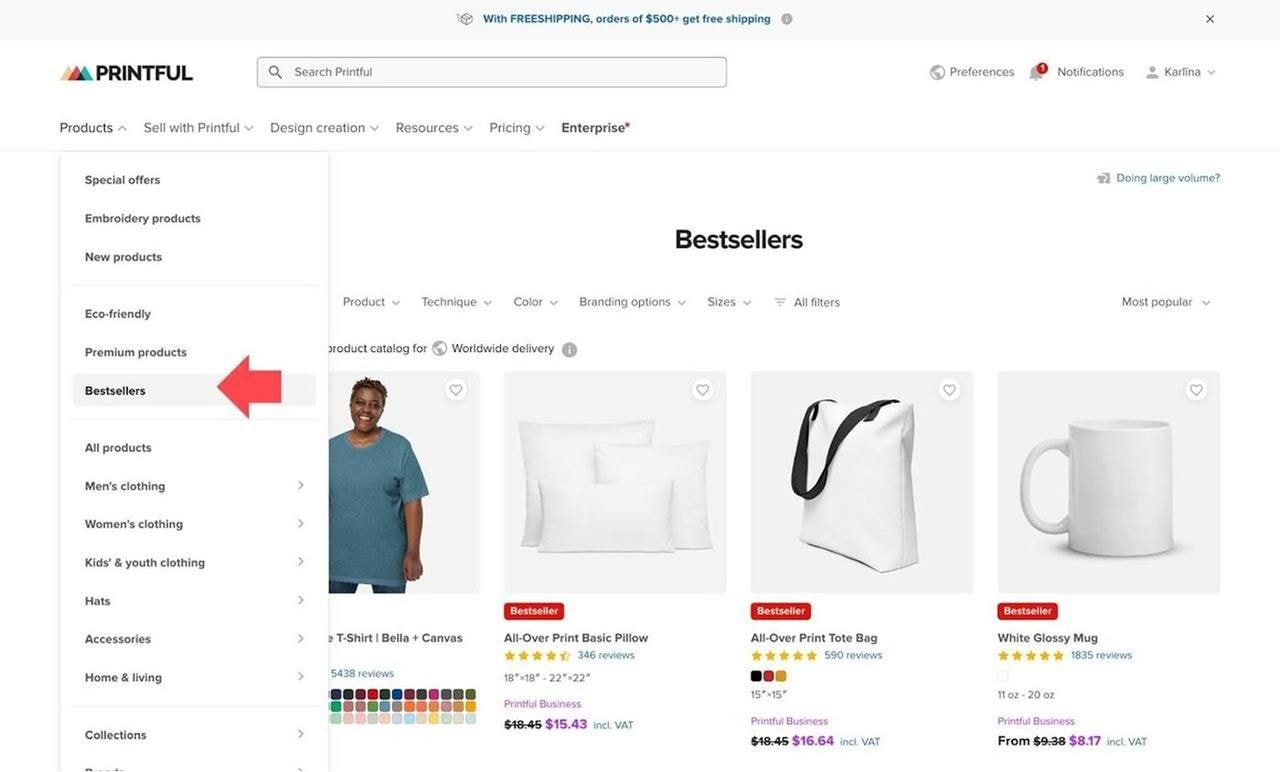
Final step: Find a reliable dropshipping partner who handles production and fulfillment so you can focus on growth, not logistics.
Valuable read: 15 Print-on-demand Niches to Watch in 2025.
2. Select a reliable supplier with $0 startup costs
Choosing the right supplier comes down to a few essentials:
-
Speed: How fast can they create and ship products? Most global customers expect delivery in 2–3 days.
-
Product quality: Your reputation depends on it. Order samples to check the product and print quality.
-
Reach: Their fulfillment network determines which markets your online business can serve.
-
Customer support: Issues happen, so choose a partner who resolves them fast.
Valuable read: The 14 Best Print-on-Demand Companies.
Why Printful works: With over 11 years in the industry, Printful is free to use and customer reviews confirm it as one of the top choices for sellers.
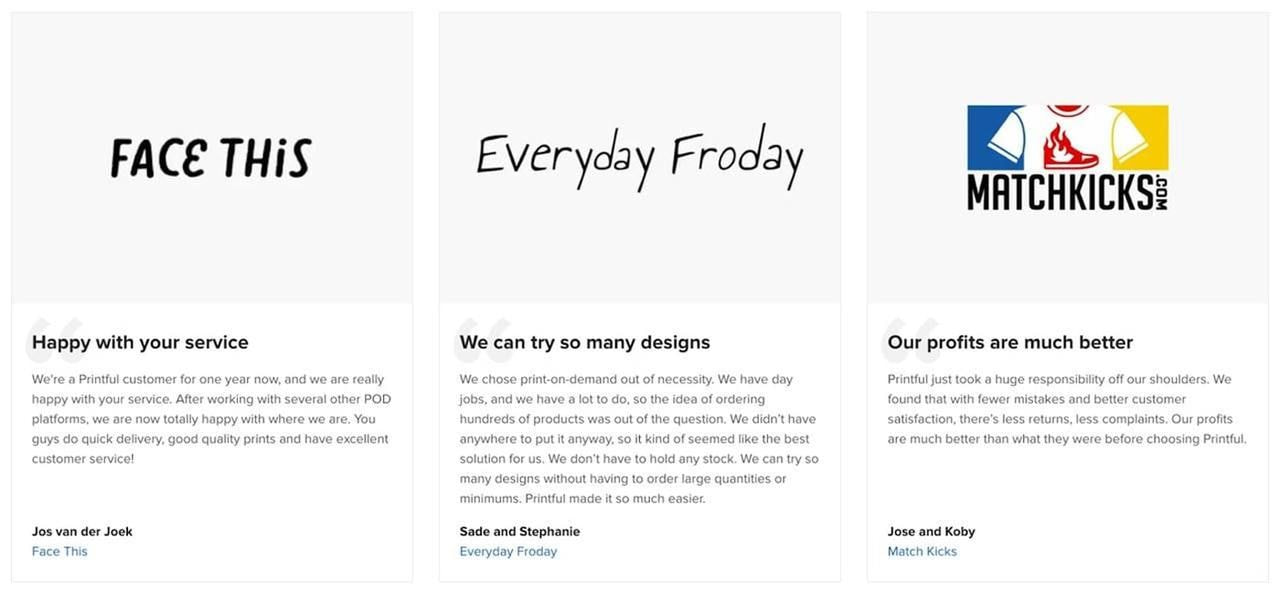
3. Get samples
Product quality can make or break your store – shoppers will either become loyal customers or never return. That’s why partnering with a dropshipping supplier who takes quality seriously is essential. The best way to check is to see the products in real life, so order samples. It’s an expense worth investing in.
With Printful, order product samples with a 20% discount, with up to 5 sample orders per month and a maximum of 5 items per order.
Here’s how to make the most of your samples:
-
Evaluate quality: Check fabric, print quality, colors, and overall craftsmanship.
-
Create marketing content: Use samples for high-quality photos and videos for your store and social media.
-
Gather feedback: Share samples with friends and family to get honest opinions on quality and appeal.
To order samples with Printful, go to the Product Catalog, select a product, and click Start new order. Then, choose the Test your designs option.
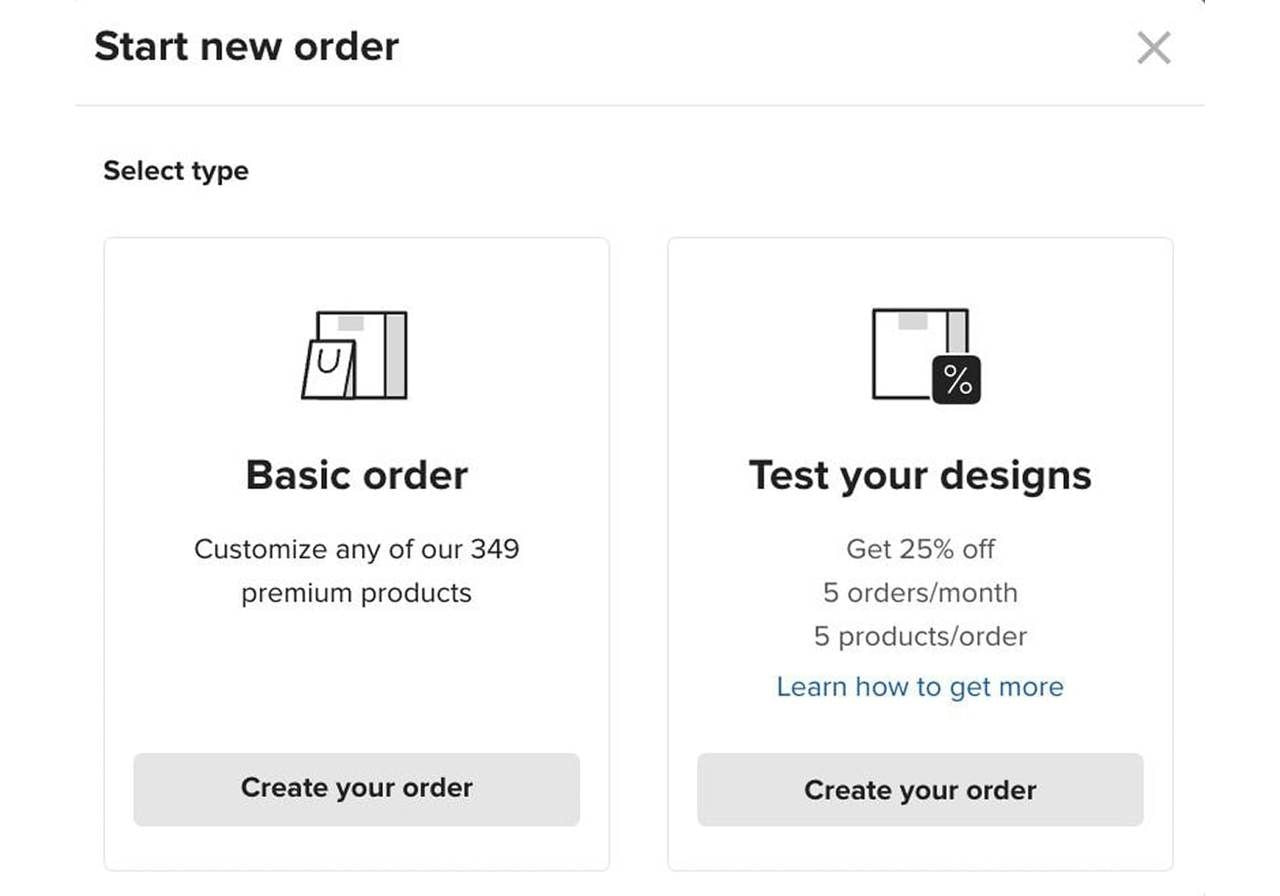
4. Set up your store for free
You’ve got a few options for creating a dropshipping store: an ecommerce marketplace, an ecommerce platform, or Printful’s Quick Stores. Let’s start with the fastest and easiest.
Quick Stores is completely free and allows you to launch a store in 10 minutes or less with just a few clicks.
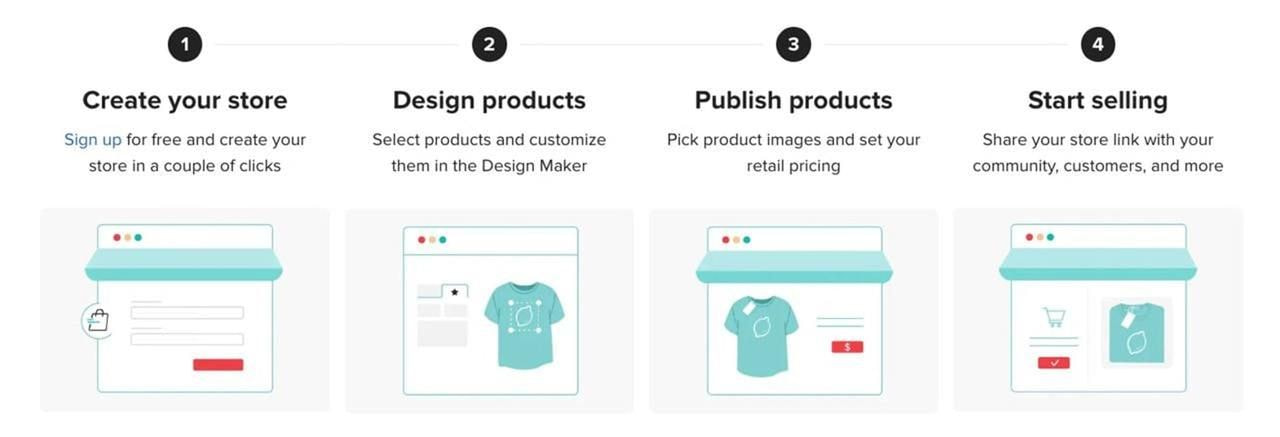
Why choose Quick Stores?
-
Quick setup. Start selling in minutes, no heavy lifting required.
-
Ease of use. Skip technical headaches or complex design work.
-
Simple management. Manage products and operations in one dashboard.
-
Cost-effective. Open your store without upfront expenses.
If you want to sell on a marketplace like Etsy or an ecommerce platform like Shopify, here’s the difference:
-
Marketplaces (Etsy, Amazon, eBay) don’t charge monthly subscriptions, but you’ll pay selling fees.
-
Ecommerce platforms (like Shopify) usually require monthly plans. Shopify doesn’t have a free version, but you can test it for 3 months at just $1/month.
To keep startup costs low, check whether the platform you’re eyeing has a free option or trial.
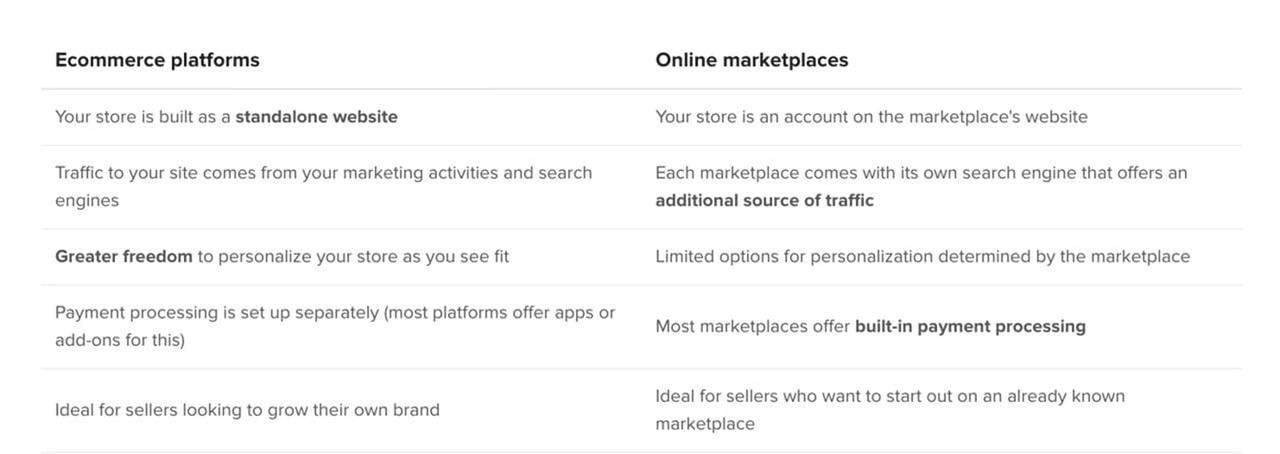
Valuable read:
Once you have your store, it’s time to fill it up with beautiful, custom products.


5. Add products to your store
If you’re starting a dropshipping business with Printful, adding products is simple.
-
Go to your Printful Dashboard.
-
Select Product templates on the left sidebar.
-
Hover over the product you want to sell and click Add to store.
-
Pick your store and follow the instructions.
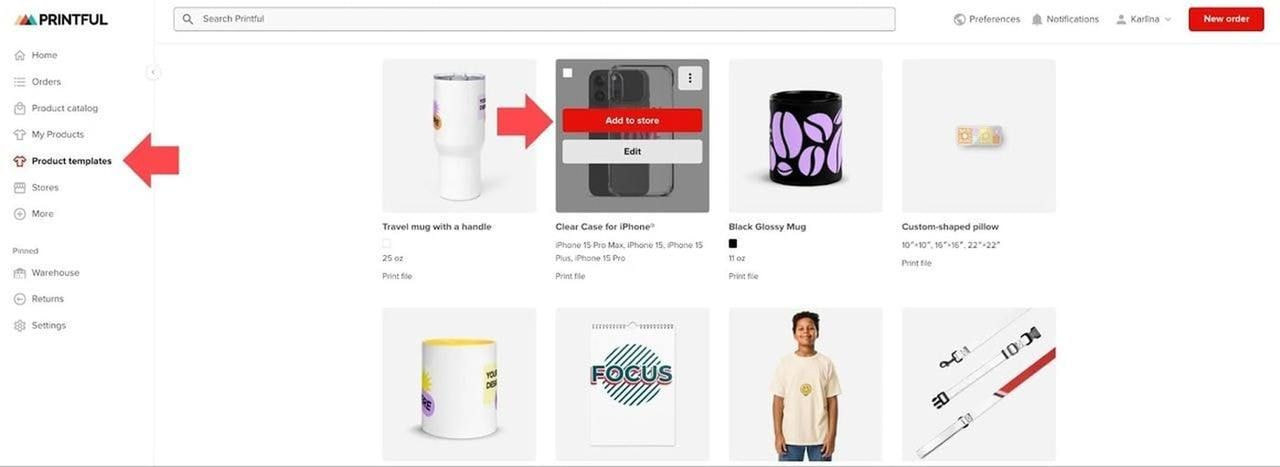
When adding products, make sure they stand out:
-
Write strong titles and descriptions that clearly explain what the product is and why customers need it.
-
Use eye-catching photos. Detailed, high-quality images build trust and help shoppers picture the product in real life.
-
Research competitors. See what’s working for them, then find ways to improve on it.
-
Follow platform rules. Each marketplace or platform has its own product listing requirements – stick to them to avoid issues.
Valuable read: How to Find Dropshipping Products That Boost Sales.
6. Drive free traffic

If you’re skipping paid ads, free marketing channels are your best friend. The trade-off? You’ll spend time instead of money. With consistency and creativity, you can sell products online without spending a dime.
Groups, communities
Join Facebook groups, Reddit threads, and niche forums. Share value, answer questions, and only promote your store when it’s relevant. This builds trust and puts your brand identity in front of a target audience without looking spammy.
Social media
Use platforms like Instagram, TikTok Shop, and Facebook to showcase your products and build a following. Post photos, reels, and behind-the-scenes clips, and jump on trends with niche hashtags.
Consistent engagement creates loyal fans and drives clicks. Tools like CapCut for editing and InShot for mobile visuals are handy here. This is a key part of smart social media marketing.
Blogging
Launch a blog on your ecommerce website to increase organic traffic and share your expertise. Write about topics your customers care about – think styling tips, how-to guides, or behind-the-scenes stories.
Follow digital marketing basics like keyword research, internal linking, and readability. Tools like Ubersuggest, AnswerThePublic, or Yoast SEO can help structure your content.
Valuable read: What Is SEO and How It Works – a Beginner’s Guide.
Influencers
Work with micro-influencers in your space. Send them free samples in exchange for authentic content to attract organic traffic. This is cost-effective digital marketing that builds trust and exposes your products to their engaged audience.
Valuable read: 5 Steps for Running the Perfect Microinfluencer Campaign.
Other smart moves
-
Run limited-time discounts or freebies in exchange for shares or follows.
-
Post in local and interest-based Facebook Marketplace groups.
-
Answer questions on Quora or comment on relevant TikToks.
It’s all part of your broader marketing strategy. The more consistent and thoughtful your marketing efforts, the better your chances of getting noticed, yes – even if you’re starting dropshipping with no money.
7. Scale with free automation & AI

One of the smartest ways to run your dropshipping business with no money like a pro is by using automation tools and AI. These tools save time, reduce manual work, and let you focus on building your brand identity instead of admin tasks.
The best part? Many come with free trials, low or no monthly fees, and only require an internet connection.
Here’s how to start automating today:
-
Product descriptions & SEO
Use AI tools like ChatGPT, Jasper, or Copy.ai to generate product descriptions, SEO copy, and blog posts. No more blank-screen panic – you’ll sound polished in minutes.
-
Visuals & content
Design social media posts, mockups, and ad creatives with tools like Canva (free plan available), Adobe Express, or Placeit. Use templates to maintain consistent branding.
-
Social media scheduling
Tools like Buffer, Later, and Planoly let you schedule posts across multiple platforms, freeing you from daily manual posting.
-
Email marketing
Use platforms like MailerLite, Brevo, or Sender to create automated email flows for welcoming customers, abandoned carts, and promotions. Most have robust free plans for new stores.
-
Customer service
Set up automated replies and chatbots using Tidio, ManyChat, or even basic Facebook/Instagram tools. This helps you stay responsive and provide excellent customer service, even while you sleep.
Automation doesn't just streamline your workflow – it helps you grow smarter. If you’re starting a dropshipping business and want to scale without blowing your budget, automation and AI are your secret weapons.
Start your dropshipping business with Printful

So – is dropshipping easy? Not exactly. But it’s a whole lot easier and more affordable than building a traditional retail business from scratch.
You won’t be able to run your store completely for free, but with thoughtful planning and free dropshipping tools, you can keep startup costs low. With Printful, there are no platform fees, free design tools, and built-in integrations that help you launch faster.
Start with just your ideas, some creativity, and a reliable internet connection.
If you’re consistent and proactive with your marketing efforts, you’ll be well on your way to earning healthy profit margins – even if you’re dropshipping with no money.
Read next:


Frequently asked questions
To start dropshipping for free, first, choose a niche and find a reliable supplier like Printful that doesn’t charge upfront fees. Next, set up a free online store using marketplaces like Etsy or TikTok Shop.
Then, list products from your supplier, focusing on high-quality images and descriptions. Promote your store through social media, SEO, and free marketing tools.
While dropshipping doesn’t require upfront investment, some unavoidable costs include product samples and selling fees. To make money faster, budget for advertising, apps, and other tools to drive traffic and sales.
To start dropshipping as a beginner, first, choose a niche based on demand and profit potential. Then, find reliable suppliers like Printful. If you want a standalone store, use platforms like Shopify or WooCommerce.
If you’re looking to build a storefront within a marketplace, Etsy and eBay are great options. Then, focus on marketing through social media, SEO, and paid ads to drive traffic.
Yes, $1,000 is enough to start a dropshipping business. With this budget, you can cover essential costs like setting up an online store and buying a domain while still having money for extras like paid ads and other marketing strategies.
Your success depends on product selection, effective marketing, and managing expenses. It’s important to continuously reinvest profits to scale the business. Starting small and gradually expanding as you learn, the market can lead to long-term success.

Zane is a sharp-witted writer with a deep interest in eCommerce, branding, and creative entrepreneurship. With a knack for blending humor, insight, and no-nonsense advice, she crafts engaging content that helps merchants learn and businesses grow. When she’s not dissecting industry trends, she's exploring philosophy, music, and the perfect balance between solitude and connection.





